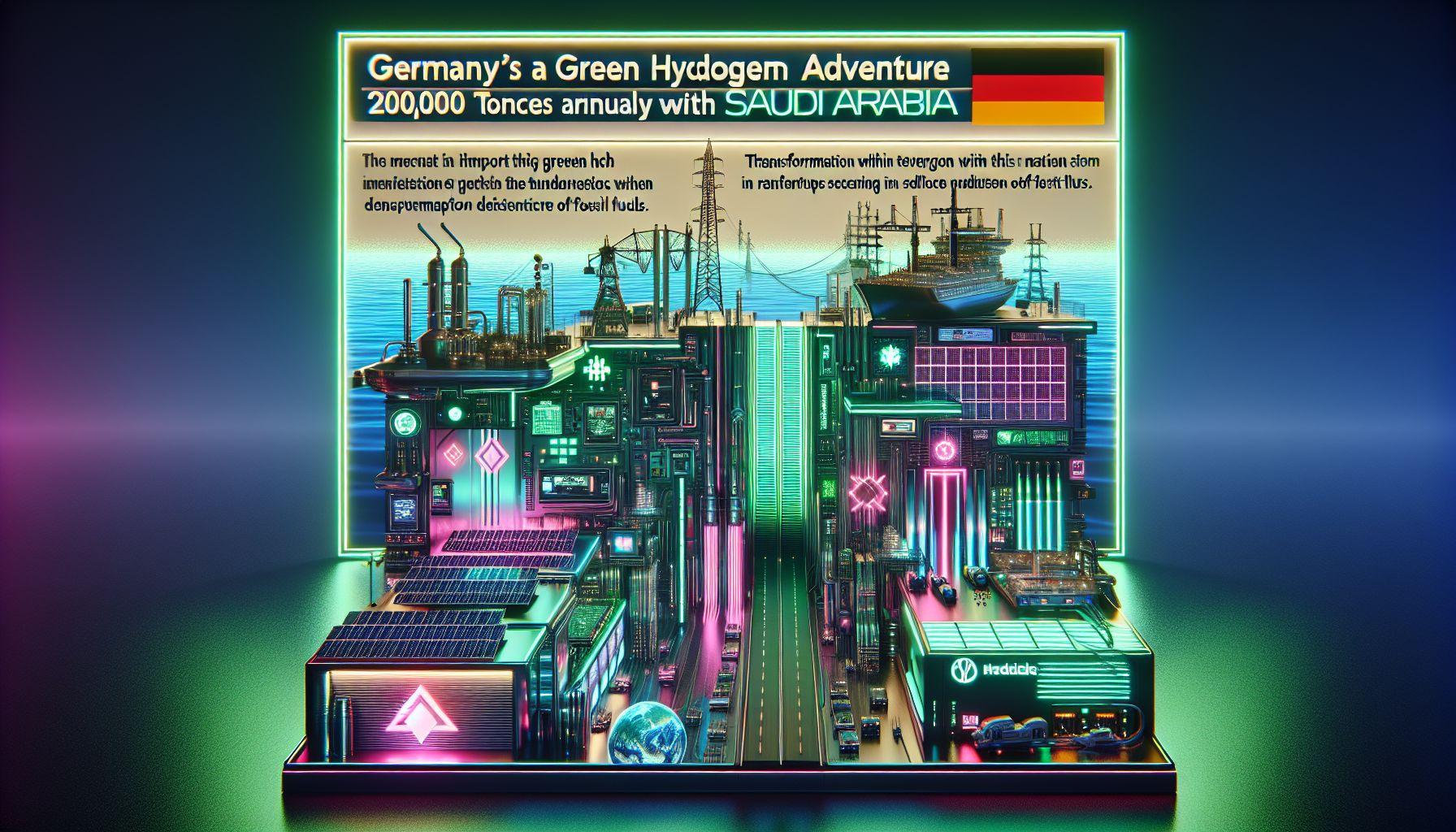Germany's Green Hydrogen Adventure: Partnering with Saudi Arabia

Riyadh, Wednesday, 5 February 2025.
Germany plans to import 200,000 tonnes of green hydrogen annually from Saudi Arabia by 2030. This move could transform the nations’ energy sectors while reducing reliance on fossil fuels.
A Historic Partnership
I’m excited to share details about a groundbreaking development in green energy. Just this Monday, Germany’s state-owned SEFE signed a memorandum of understanding with Saudi Arabia’s ACWA Power [1][3]. This agreement marks a significant shift in energy trade between the two nations, with plans to supply 200,000 tonnes of green hydrogen annually to the European market by 2030 [3][4]. The hydrogen will be produced entirely using wind and solar power, representing an energy content of nearly 6.7 terawatt-hours [3].
Saudi Arabia’s Renewable Advantage
As a renewable energy expert, I find Saudi Arabia’s positioning fascinating. They’re leveraging their natural advantages in solar and wind resources to transition from traditional oil exports to green hydrogen production [1]. The country is backing this ambition with concrete action - they’re currently developing what will become the world’s largest green hydrogen facility, featuring a massive 2.2 gigawatt electrolyzer powered entirely by renewable energy [1]. According to Wesam Al-Ghamdi, CEO of NOEM Green Hydrogen Company, ‘We have the abundance of solar and wind, so we have that renewable power competitive advantage’ [1].
Germany’s Strategic Vision
Looking at Germany’s broader energy strategy, this deal aligns perfectly with their ambitious goals. The country aims to import hydrogen with an energy equivalent of between 360 and 500 terawatt-hours by 2045 [3][4]. This partnership isn’t happening in isolation - SEFE has already secured similar agreements with Brazil’s Elektrobras and Norway’s Equinor [3], demonstrating Germany’s commitment to diversifying its green energy supply chain. It’s worth noting that SEFE will serve as both a co-investor and the primary off-taker in this project [4].
Technical Challenges Ahead
I should point out that transporting hydrogen isn’t without its challenges. The gas requires either ultra-cold temperatures (-253°C) or high pressures (350 to 700 bar) for transport [1]. To address this, the green hydrogen will be shipped in the form of ammonia [3]. While this solves the transportation challenge, it’s important to note that there are energy losses during the conversion back to hydrogen [1]. Some experts suggest this process of using Arabian solar power to produce hydrogen, convert it to ammonia, and then back to hydrogen in Germany might be less efficient than other alternatives [1].